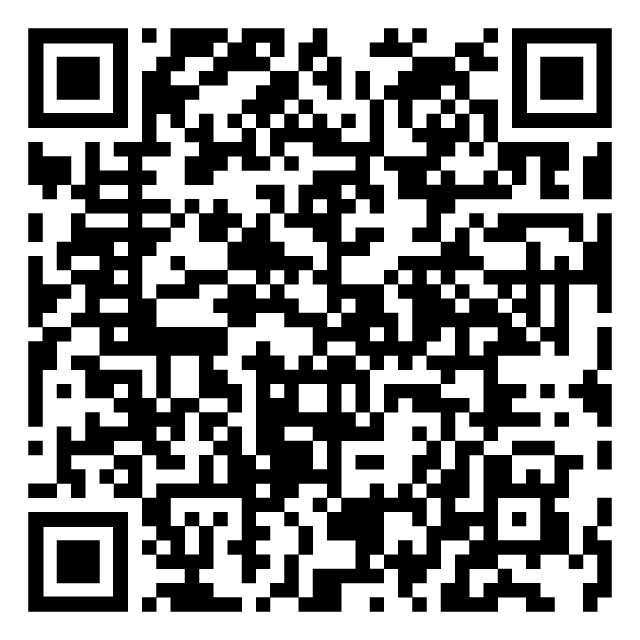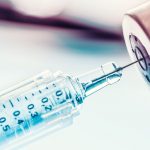Developments in the fight against COVID-19 and weaknesses of the Argentine patent system as an instrument to promote research.
By: Fernando Noetinger.
For several months now the pharmaceutical industry and public and private research centers throughout the world have been in a race to find a vaccine and/or drugs to prevent and treat COVID-19. Such a massive response by the industry and research centers is a rare sight. In many cases, these efforts are conducted by different groups of companies and research centers that have joined forces and which share their developments in the search of means to prevent and treat COVID-19. These collaboration agreements are built on the premise that each participant has duly protected their rights over their own developments sharing information through voluntary license agreements.
In the past four months, the biotech industry has started more than 500 vaccine and treatment projects. Some of these vaccine development projects are already undergoing Phase 3 clinical trials –some with positive outcomes. Based on historical data, it is estimated that only 6% of all vaccines subject to clinical trials are introduced in the marketplace. The big challenge is to develop a vaccine, which – further to safe and effective– may be manufactured and distributed as soon as possible, or better said, as soon as it is approved by regulatory authorities. In terms of potential treatments, there have been trials with products used for other diseases, for example certain antiviral drugs, such as a combination of lopinavir and ritonavir (used for the treatment of HIV), remdisivir (a broad-spectrum antiviral used in the treatment of the Ebola virus), azithromycin in combination with hydroxychloroquine, ifenprodil (used in the treatment of pulmonary fibrosis), dexamethasone (a corticoid with anti-inflammatory, immunosuppressive and antiallergic effects), convalescent plasma or hyperimmune serum therapies, to name but a few of the possibilities that have been explored in the past months. Although some of them show certain positive effects, the truth is that, for all of them, the results are partial. To date, no sufficiently effective treatment has been found. Furthermore, only some of the findings of the ongoing trials have been conclusive. For example, a trial with dexamethasone found that the use of this drug in the treatment of patients with severe COVID-19 connected to a ventilator may reduce deaths by about one third (1). To conclude that there are actual benefits associated with the use of this drug, a randomized trial was conducted with a significant population and investment, whose success –in principle– was not guaranteed. As for any other drug, both for the prevention and the treatment of this virus, the costs of research and of clinical trials are high. In turn, they are subject to the risk that –in the last phase, because success is not guaranteed– the outcomes may not be as expected. To this, we must add the time demanded by research and clinical trials, as well as the time needed to device an adequate distribution system. Usually a minimum of 10 years lapse since a molecule starts to be researched until the product is available on pharmacies. Researching, conducting clinical trials, and then manufacturing a vaccine or a drug to treat any given disease requires multi-million-dollar investments by pharmaceutical companies that must have the funds necessary for these activities. In many cases, public and private research centers receive funds from different sources in support of their projects. Most of the findings of their research will be protected by patents. These patents warrant the inventor that –for a limited period of time– they will have an exclusive right that will enable them to cover the costs of Research and Development and to obtain additional funds for future developments. To this extent, it is necessary to have adequate laws and regulations to support the efforts of inventors. As we shall see below, unfortunately this is not the case of Argentina. The relevance of patents in support of the research efforts of companies and research centers is such that the World Intellectual Property Organization (WIPO) has made more that 80 million documents, more specifically patents and associated documents available to those working in the research of vaccines or treatments against COVID-19. The free use of these documents, available in ten different languages, will enable researchers to access to extremely valuable information, such as the information usually found in patents. This evidences the importance of an adequate patent system, not only as an incentive for research and as a compensation for the efforts of developing it, but also to enable third-parties to use existing knowledge as bases for their ongoing and future research initiatives.
Are patents a barrier to the access to drugs?
With the COVID-19 pandemics, there have been claims both in our country and abroad that the existence of exclusive rights for those researching alternatives to prevent and treat the disease is a barrier that will restrict the general access of the population to said treatments or vaccines. Attention has also been placed on the legislation in general –namely, international treaties and local laws– which prescribe tools to enable the marketing of these products by third parties, through a compulsory license system. Regarding the claims that industrial property rights would be an obstacle to the access to new drugs, it should be noted that these barriers are, in fact, due to other multiple causes. Francis Gurry, outgoing Director General of the World Intellectual Property Organization (WIPO), has stated that, as regards patent systems, international treaties contain provisions that remove the possible obstacles for the general access to the drugs and therapies at issue. Other barriers may be found in defective or belated public policies for the access to medicines, delays in the regulatory sector (which must approve the start of the clinical trials mandated by the applicable regulations), the control of clinical trials, the approval of the products per se, the rules applicable to drug or drug-component imports, and delays in the distribution process, to name but a few.
Regarding the patent system as an instrument to promote research, the cost-benefit relationship has been considered positive, to such an extent that almost all countries have enacted laws to afford rights to inventors and protect the results of their research. There have been in the past proposal by law makers that make governments the main actors by establishing that the Government (i.e., taxpayers) must assume the risks entailed by the development of a product such as a vaccine, which could possibly not be effective or safe enough so as to be approved and placed in the market. Within the patent system, on the contrary, the risk is exclusively borne by the party conducting the research and development of new products. Strategic alliances have been created to share information and make significant investments aimed at developing products to overcome the present pandemics. These collaboration agreements set forth the rights of each party over the results of the research conducted thereunder. Undoubtedly the results of such research will be protected under the patent system or, in some cases, under the trade secret regime. Below we will discuss the initiatives to establish a collaborative scheme for a technological information system as the one created by the World Health Organization in May 2020. These initiatives will be hardly supported by those who have invested time and money to develop new and effective products to fight against COVID-19 who, however, have stated their willingness to make their products and developments available to healthcare systems, at reasonable cost – some of them, even at no cost. It should be noted that the difficulties faced by inventors to protect certain inventions under the patent system, leads to a lack of interest in research and development with the speed that the circumstances demand. In many cases, the obstacles posed by the system against investors cause them to keep key elements of their inventions secret. Consequently, third parties are prevented from accessing to the knowledge available in patent documents, which ultimately prejudice the scientific community.
Compulsory licenses and non-commercial public uses.
As soon as there were news on the efforts to find a cure or adequate treatment (preventative or curative) for COVID-19, with the praiseworthy excuse of affording access to the drugs to as many individuals as possible, different parties under the umbrella of the World Health Organization (WHO), proposed initiatives to create some sort of “knowledge pool” into which the companies that are conducting research should contribute the findings of their research, gene sequences, data on the outcomes of clinical trials, patents, etcetera. Said proposal is different from Medicine Patent Pool (MPP), an organization sponsored by the United Nations in which innovation companies such as AbbVie, Bristol Myers, Squibb, Gilead, and Merck Sharp Dome make their patents available to thirdparties through non-exclusive licenses. This proposal of the WHO was supported by over twenty countries, among others, Argentina. However, to date and at least in this initial phase, it has not been supported by countries like the United States, Germany, Switzerland, China, or India. Behind these initiatives there are intentions devoid of individual interests, but there are others that, with a clear ideological bias, seek to undermine the patent system. Others support such initiatives with the sole purpose of obtaining market advantages for themselves. We should bear in mind that there are strong economic interests of sectors that seek their own benefits at the cost of those who venture and invest on Research and Development. In general terms, we see that those who now claim that patents are a barrier to the access to drugs, or unearth the rules on compulsory licensing, do not themselves propose any initiatives or projects to encourage and support the research, development and manufacturing of new medicines. Undoubtedly, all the efforts aimed at granting access to new drugs and medical innovations for as many individuals as possible are praiseworthy. However, blaming patents and, consequently, impairing the rights of the party who invested time and money in research, will not cause drugs to be accessible for all. Quite the contrary, the consequence will be a delay in the possibility to access to new treatments. If there are abuses at any step of the chain, there are legal resources to make them stop. In certain circumstances, the compulsory license system may prove extremely useful as a resource against the pandemics. We must admit, however, that the system has not had an extensive practical application. These licenses have been granted only in a few countries, and the basic requirement for their granting was the pre-existence of granted patents. The scarce use of compulsory licenses is clear evidence that this legal resource has not had the use that its creators envisioned. The compulsory license system was initially adopted in our country in 1966 with the enactment of Law No. 17.011 that adhered to the Paris Convention for the Protection of Industrial Property. Almost 30 years later, new legislation was passed in this respect, first with the enactment of Law No. 24.425, which by the end of 1994 approved the Final Act Embodying the results of the Uruguay Round of Multilateral Trade Negotiations, whose Annex 1C includes the Agreement on the Trade-Related Aspects of Intellectual Property Rights (TRIPS), and some months later with the enactment of the new Patent Law No. 24.481.
This system has been in force in our country for more than fifty years; however, to date, not a single compulsory license has been granted. It is clear then that –even if the system exists– the use of this system is null. More recently, on December 21, 2019, the Federal Congress passed the Social Solidarity and Productive Reactivation Law No. 27.541. Article 70 of this Law authorizes the Ministry of Health to rely on possible “compulsory licenses” in case of lack of availability or unjustified or unreasonable price increases that may impair the access to drugs or health devices by the population at large. It is quite unlikely that, in our country and in the pharmaceutical sector such a license will be ever granted.
Which are the laws and regulations presently in force in Argentina to protect pharmaceutical inventions?
The laws and regulations in force in our country do not impair the patentability of pharmaceutical products. However, in practice, most of them lack protection. The supranational legislation for the protection of inventions is the TRIPS Agreement (Law No. 24.425), that states in Article 27.1 that patents shall be available and patent rights enjoyable without discrimination as to the field of technology. The Argentine Patent Law does not inherently contain any rules to exclude pharmaceutical inventions. However, due to a Joint Resolution issued in 2012 (which are clearly unconstitutional), most of the pharmaceutical developments will be very difficult if not impossible in many cases, to be protected with patents. On May 2, 2012, the “Joint Resolutions” passed by the Ministry of Industry (Resolution 118/2012), Ministry of Health (Resolution 546/2012), and the Argentine Industrial Property Institute (Resolution 107/2012), under the title “Guidelines for the Examination of the Patentability of Patent Applications for Chemical and Pharmaceutical Inventions”, a series of inventions that were patentable, prior to the passing of said Resolution, were declared not patentable. In order words, these ministerial resolutions set forth grave limitations to a constitutional right, without prior amendment to the substantive legislation. These “Joint Resolutions” excluded pharmaceutical products and formulations (including human vaccines), new applications of known polymorphous components and other byproducts of the components (with certain exceptions). Consequently, except for new molecules, for example, the vast majority of the developments underway to prevent and treat COVID-19 will not be subject to patent rights in our country, or in any case challenging the constitutionality of said restrictions will be necessary.
Given this state of affairs, present since 2012, it is noteworthy that the Ministry of Health (which is aware of the existence of the above mentioned Joint Resolutions) has failed to note the scarce or null application that the mandatory licenses prescribed by Article 70 of Law No. 27.541 would have. Also surprising is that the Ministry has failed to note that the laws and regulations in force (namely, Paris Convention, TRIPS and Patent Law) already provide rules on compulsory licenses, moreover in circumstances like the present pandemics. Especially noteworthy is that the above-mentioned rule is founded on the premise that there are –or will be– patents to protect pharmaceutical products such as pharmaceutical formulations, vaccines, new applications of drugs used for other diseases, etcetera. Undoubtedly, the availability of patents to protect what was patentable until 2012 (pharmaceutical formulations, new uses, etcetera) would be in the best public health interest. Because compulsory licenses are not exclusive, the Licensee would compete with the patent owner, which would in turn lower the price of the product. If compulsory licenses are deemed a solution to price or supply problems, the instrument necessarily requires the existence of patents that would be subject to that exception regime. Without patents there cannot be a compulsory license. Given the laws and regulations presently in force, assuming that there would be patents to which the compulsory license system would be applied is almost unconceivable. In order to promote domestic research and development –which could potentially bring huge public health benefits for the population at large– it is necessary to abrogate the unconstitutional Joint Resolutions mentioned above, and to establish a mechanism to expedite patent granting procedures, as many other countries have done. It is also necessary to provide more agile mechanisms for clinical trials, an area in which our country has excelled at a regional level. In this sense, pharmacological and clinical research protocols developed by local and international pharmaceutical companies in the last years, which were later approved by the ANMAT (Argentine Food, Drug and Medical Technology Administration), represented an investment of over 1.25 billion dollars. At a time when particularly potential vaccines are starting to be tested in clinical trials, these studies should continue. This will be possible if there is legal certainty in the protection for the products that are subject to any such trials. The laws and regulations currently in force in our country are far from affording a reasonable level of protection.
Moreover, the data obtained in clinical trials should also be granted an effective level of legal protection. If the product for which patent is sought was patentable despite the strict, and incomprehensible, exclusions set forth by the Joint Resolutions, as long as the relevant applications were filed in 2020, and if the patent was granted, this would take no less than five years, when hopefully we will not find ourselves in a situation that would merit the application of compulsive licensing rules.
A few conclusions
The first conclusion we may draw from the foregoing is that, with respect to pharmaceutical products, the compulsory licensing system regulated by several of the laws in force in our country is of scarce or null application, particularly for the prevention or treatment of COVID-19. The reasons for this are that the system presently in force bans the granting of patents for most of innovations in this industry, and that –even if this was allowed– there are very few chances for a patent to be granted in the next 12 months that could be subject to such type of licenses. To change this, the rights of inventors should be recognized without delays and without requirements that discourage investment. Many of the developments to which legal protection is denied in our country today are protected under the law in most Latin American countries. We may not ignore that the international patent system contains the necessary tools to impair any potential abuses, both in treaties and in our domestic laws. Throughout the years, this system has proved to be the most effective tool to promote research and development by the pharmaceutical industry and by other sectors, to such an extent that even the countries that had initially rejected it on ideological grounds have now fully adopted it. As a final note, had products like Zoom of Meet not been developed, we would hardly have been able to work remotely with any degree of success, further to other tools that have been developed throughout the years and that are today fueling our virtual work life. It is thanks to the protection mechanisms afforded by intellectual property laws that we were able to adapt our lives to a new reality that we could have never anticipated –both at the personal and work levels.












